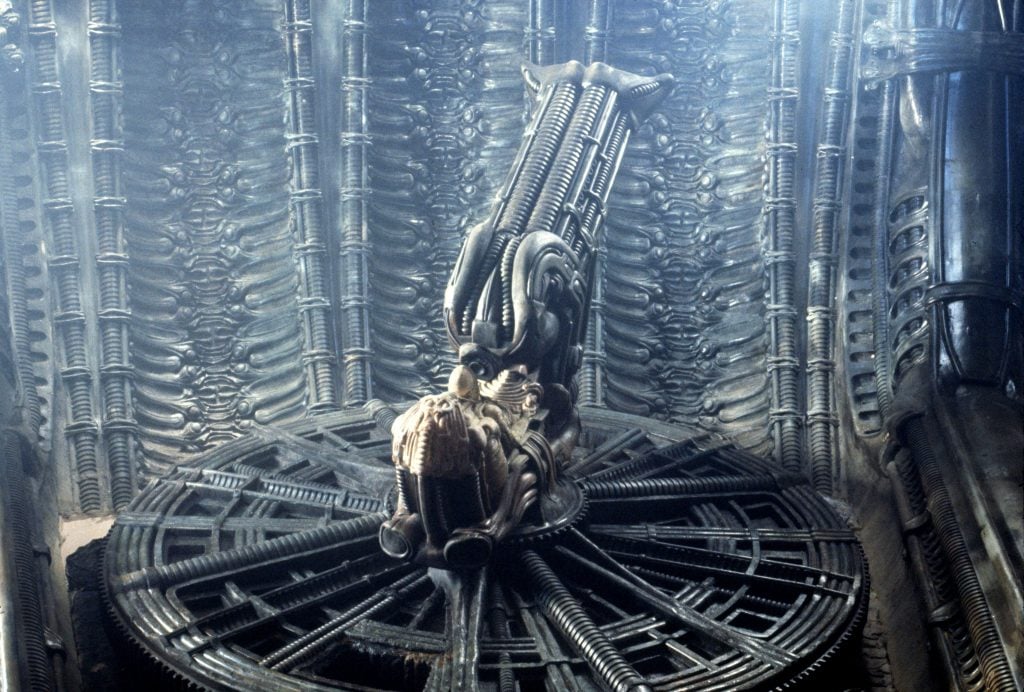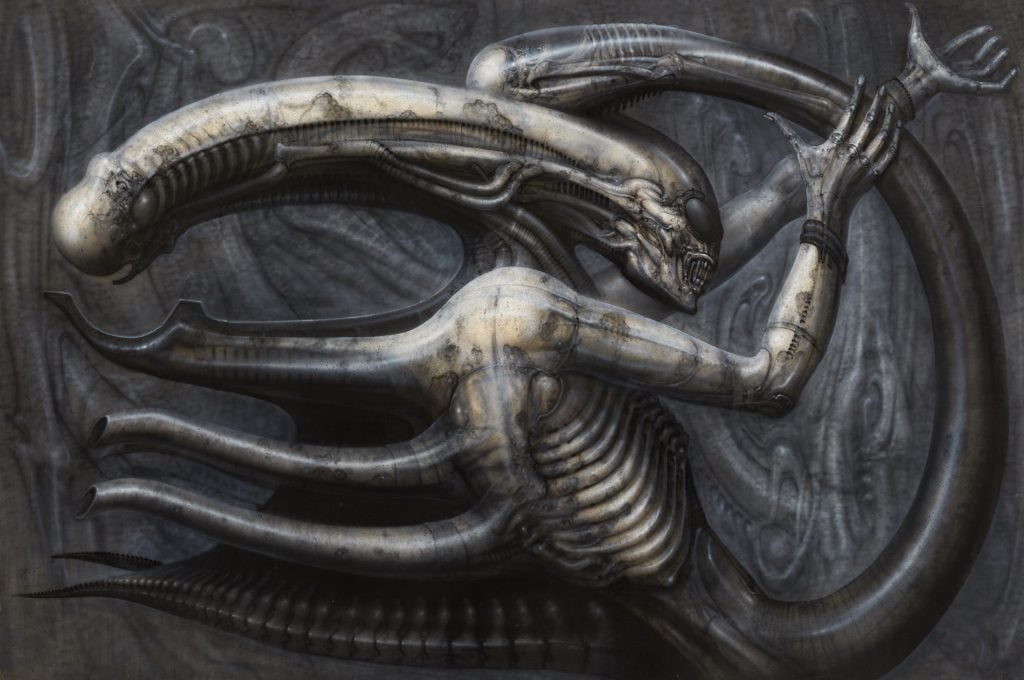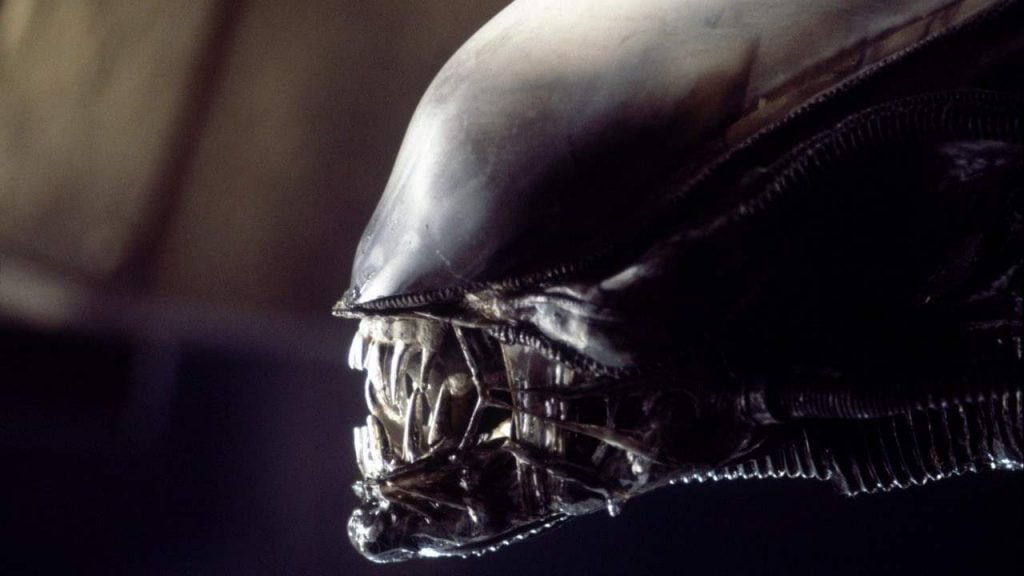Pop Culture
As Seen on ‘Alien’: H.R. Giger’s Biomorphic Nightmare
The Swiss artist's iconic Xenomorph set the tone for Ridley Scott's sci-fi horror.

There’s a lot to love about Ridley Scott’s 1979 science-fiction horror film Alien, including the masterful directing, suspenseful screenplay written by Dan O’Bannon, and its compelling protagonist, Ripley, played by Sigourney Weaver. However, the most striking part of the film—and arguably the key to its enduring success—has to be the arresting appearance of the extraterrestrial at its center: the Xenomorph.
Even in early development, Scott’s team understood how important the design of the titular creature was to the film’s success. In fact, producer Walter Hill famously remarked that Alien would “succeed or fail [depending] on the conception of the beast.”
The Xenomorph has become so iconic that it is difficult to imagine it looking any different from what we ended up seeing on screen. That said, Scott’s team actually cycled through a number of designs before settling on the final version. One of the first iterations, designed by American-Australian artist Ron Cobb, who previously worked on Star Wars: Episode IV – A New Hope (1977), apparently resembled a massive, four-legged crab.

H.R. Giger in front one of his Alien works in New York, 1980. Photo: Allan Tannenbaum/Getty Images.
Dissatisfied with this design, Scott turned to a different artist named H.R. Giger. Born in Switzerland, Giger was known for his paintings of demonic, biomechanical creatures, drawn in a style so unique that it has given rise to the term “Giger-esque”. When Scott stumbled across the artist’s Necronomicon, a 1977 coffee table compendium of his greatest work, the director was so impressed that he decided to bring him onto the project.
Scott was particularly taken by an illustration titled Necronom #4, which depicts a creature that looks almost identical to the Xenomorph. Its black, armored body and elongated head went through minimal changes before production started. Added to the overall design were the extraterrestrial’s show-stopping inner jaw and acidic blood—a parting gift from Cobb.

H. R. Giger, Necronom IV (1976). Photo: Frank Sperling.
The end result was equal parts terrifying and graceful. “I always wanted my alien to be a very beautiful thing, something aesthetic,” Giger later recalled. “A monster isn’t just something disgusting; it can have a kind of beauty.”
It’s one thing to draw a creature, and another to turn that design into a three dimensional model for filming. Giger, despite having little experience with the latter, tackled both. Channeling his inner sculptor, he allegedly created the Xenomorph’s fluorescent lips using condoms. He also placed a real human skull inside the creature’s elongated head to help him work out the anatomy.

The xenomorph in Alien (1979). Photo: 20th Century Fox.
Because the alien was such an important part of the film, Scott eventually promoted Giger to full-fledged production designer. “Down the line, I realized it made a lot of sense for Giger to design everything that was to do with the alien,” he explained. “That includes the landscape and the spacecraft.”
Although Giger ended up winning an Academy Award for his work on Alien, he feels he has not been given enough credit socially or commercially for the film’s many sequels, which borrows liberally from his original design.
“The creatures in Alien: Resurrection are even closer to my original Alien designs than the ones which appear in Aliens and Alien 3,” he wrote in an open letter to the franchise’s distributor, 20th Century Fox. “The film also resurrects my original designs for the other stages of the creature’s life-cycle, the Eggs, the Facehugger and the Chestburster. Alien: Resurrection is an excellent film. What would it look like without my Alien life-forms? In all likelihood, all the sequels to Alien would not even exist! The designs and my credit have been stolen from me, since I alone have designed the Alien. So, why does not Fox give me the credit I rightfully earned?”
As Seen On explores the paintings and sculptures that have made it to the big and small screens—from a Bond villain’s heisted canvas to the Sopranos’ taste for Renaissance artworks. More than just set decor, these visual works play pivotal roles in on-screen narratives, when not stealing the show.





